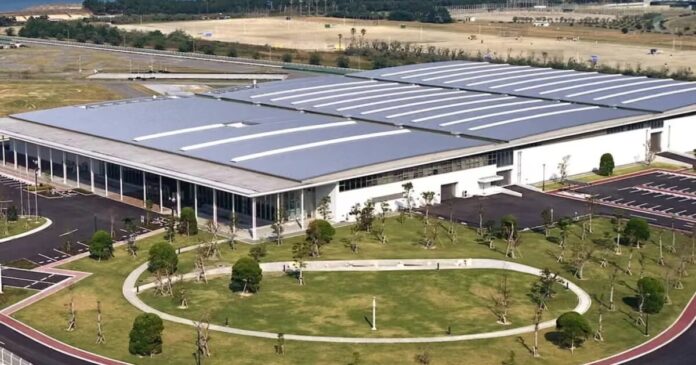Imagine generating power not from sunlight or wind, but from the simple mixing of fresh and salt water. This is the quiet promise of osmotic energy, a renewable energy source generated where river meets ocean. The idea has been around for decades, but only now is it flowing into real-world use.
The principle behind osmotic potential is deceptively simple. When fresh and salt water are separated by a semi-permeable membrane, water molecules naturally move across the barrier to balance the difference. That flow builds up pressure strong enough to spin a turbine. No combustion, no emissions. And unlike wind or solar, there is no dependence on weather or daylight, making it capable of running continuously.
The first real push came in 2009, when the Norwegian company Statkraft built one of the world’s first prototype osmotic power plants. The four-kilowatt demonstration model proved the concept could generate electricity, but due to costs the technology mostly lingered in labs and small pilots.
Now, for only the second time since development of those prototypes, a full-scale facility has opened in Fukuoka, Japan. Built by a consortium including the National Institute for Materials Science and local partners, it’s the world’s second osmotic power facility designed for continuous output following the launch of another plant in Denmark in 2023. While considered modest in scale, it will generate around 880,000 kilowatt-hours per year – enough to power 220 households or offset the energy needs of a desalination plant.
What sets the Fukuoka facility apart from any prior iterations of the technology is not the amount of energy it generates, but how it applies physics to infrastructure. By pairing with a desalination plant, it taps into concentrated brine waste that would otherwise be discarded, creating a sharper salinity contrast than rivers naturally provide. Those stronger gradients boost efficiency and grounds osmotic generation in existing systems rather than the lab.
Still, hurdles remain. Pumping losses and membrane fouling can erode efficiency, and advanced membranes are expensive.
“While energy is released when the salt water is mixed with fresh water, a lot of energy is lost in pumping the two streams into the power plant and from the frictional loss across the membranes,” said Professor Sandra Kentish of the University of Melbourne in a recent interview with The Guardian. “This means that the net energy that can be gained is small.”
Precisely the sort of challenges that pushed companies such as Statkraft to shutter its prototype after a few years.
While the Fukuoka facility doesn’t claim to have solved all of the issues, it shows that osmotic power can be folded into real-world infrastructure. Advances in membrane and pump technology are reducing the losses, Kentish noted, and Japan’s use of concentrated brine from desalination increases the energy available. That integration marks an engineering milestone – and underscores the core attraction of osmotic power: its reliability.
Unlike solar or wind, osmotic power can run continuously wherever fresh and saltwater meet; at estuaries, desalination plants, even inland salt lakes. Researchers say the global potential is vast, potentially one day rivaling hydropower if costs continue to come down. The launch of the Fukuoka plant signals renewed interest in exploring this emerging energy source.
And while osmotic power may never match the scale of solar or offshore wind, parity isn’t required for impact. As energy grids diversify, steady background renewables will matter more than ever, especially when they can plug into existing infrastructure.
In Fukuoka, salt and fresh water are already driving turbines, turning a long-studied concept into a working source of power. A modest step, showing osmotic power edging closer to real-world relevance.
Sources: Science Japan, The Guardian


